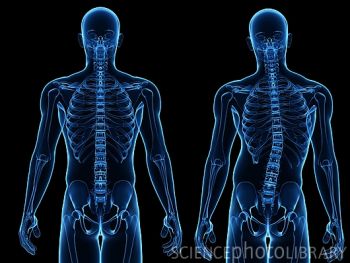As most of you know, scoliosis is a lateral curvature of the spine, which can start from a young age and is usually idiopathic (of unknown origin). It involves a rotation of the vertebra, which can lead to symptoms of back pain, headaches, migraines, digestive issues and sometimes, developmental disorders.
Scoliosis screening can begin at home. You can check your child by looking at them from behind with no shirt on. Look for:
• even shoulder height,
• any head tilting
• uneven hips or waist curves
• any rib humping or prominence of the shoulder blades
If any of these are present it is recommended to get your child checked by your local chiropractor.
This term we will be screening Year 6 students at Allambie Heights Public School. This age group are prone to growth spurts and research shows the progression of a scoliosis occurs most during these periods. Adolescent idiopathic scoliosis is more common in girls then boys, but spinal checks are recommended for both genders, and prevalence increases rapidly from 11yrs of age to 14.
If a scoliosis is detected, X-rays may be required to determine the extent and severity of the deformity, and a management plan can be created.
The best treatment results for a scoliosis are attained when it is detected early and managed appropriately.
Chiropractic has been shown to improve symptoms caused by a scoliosis, and is believed to positively influence the progression of the curve if discovered early enough. A study from 2011 reported that a 10yr old female who reported to her chiropractor with migraines was found to have a 35degree thoracolumbar scoliosis. After a treatment period that included several upper cervical adjustments over a period of 11 visits, the patient was re x-rayed showing a 10degree reduction of curvature. This suggested that upper cervical joint lesions could influence a scoliosis.
In addition to chiropractic there are other forms of management for a scoliosis. ScoliCare is an organisation in Sydney (and other major cities) specialising in scoliosis care. For those cases beyond the scope of chiropractic, ScoliCare offers conservative, non-surgical scoliosis treatment options. Practitioners there will assess the patient and help develop the best management plan for that person.
Three main treatment options that are recommended include: the SpineCor Dynamic Brace, the Gomez rigid brace and the Schroth Physiotherapy method. Several studies have confirmed that the SpineCor Brace is very effective for treatment of adolescent idiopathic scoliosis and tend to suggest a positive long-term treatment outcome.
My aim from this month’s blog is to emphasise the importance of early intervention when it comes to treatment and management of scoliosis. There are several different types of treatment options in regards to managing the condition, but the success of these depend on how early they are implemented.
If you are concerned about your child’s spinal health, or if you would like your school to be involved with our Scoliosis Screening Initiative please contact us at the clinic.
If you would like more information or would like to book an appointment at Neurohealth Chiropractic – please call the clinic on 9905 9099 or email us admin@neurohealthchiro.com.au or fill in the contact form from our website www.neurohealthchiro.com.au
Sign up to receive Neurohealth Chiropractic’s Free monthly health newsletter on the Right Hand Side of this page. Filled with great information and lots of easy health tips to keep you at Optimal Health!




